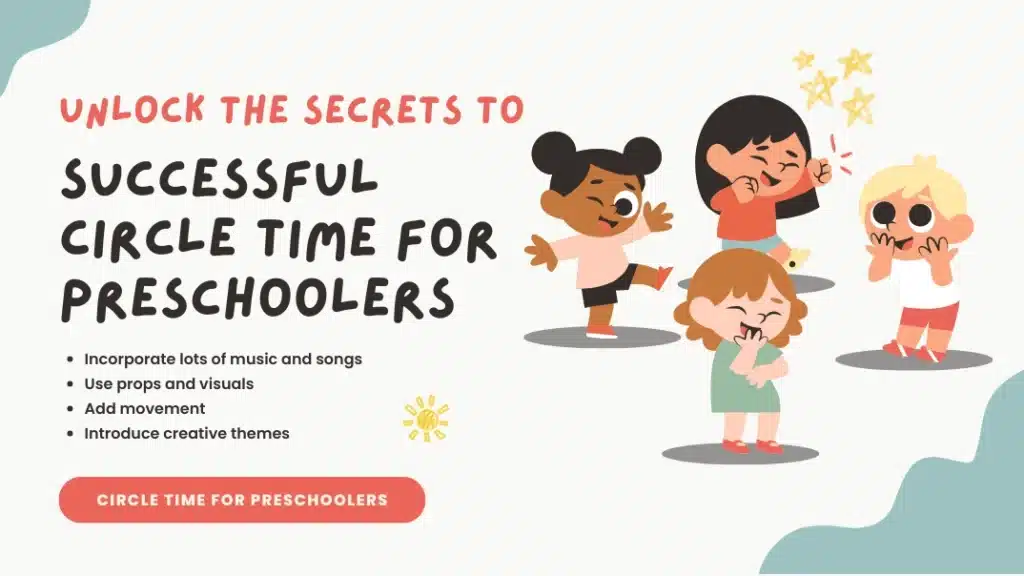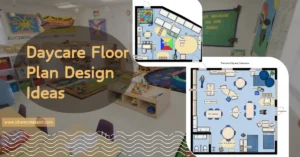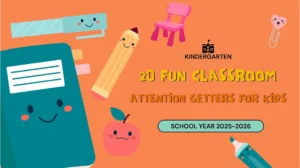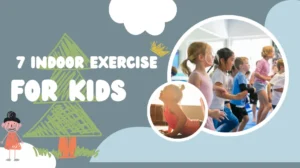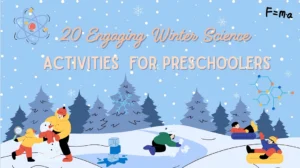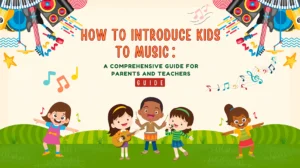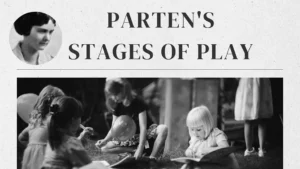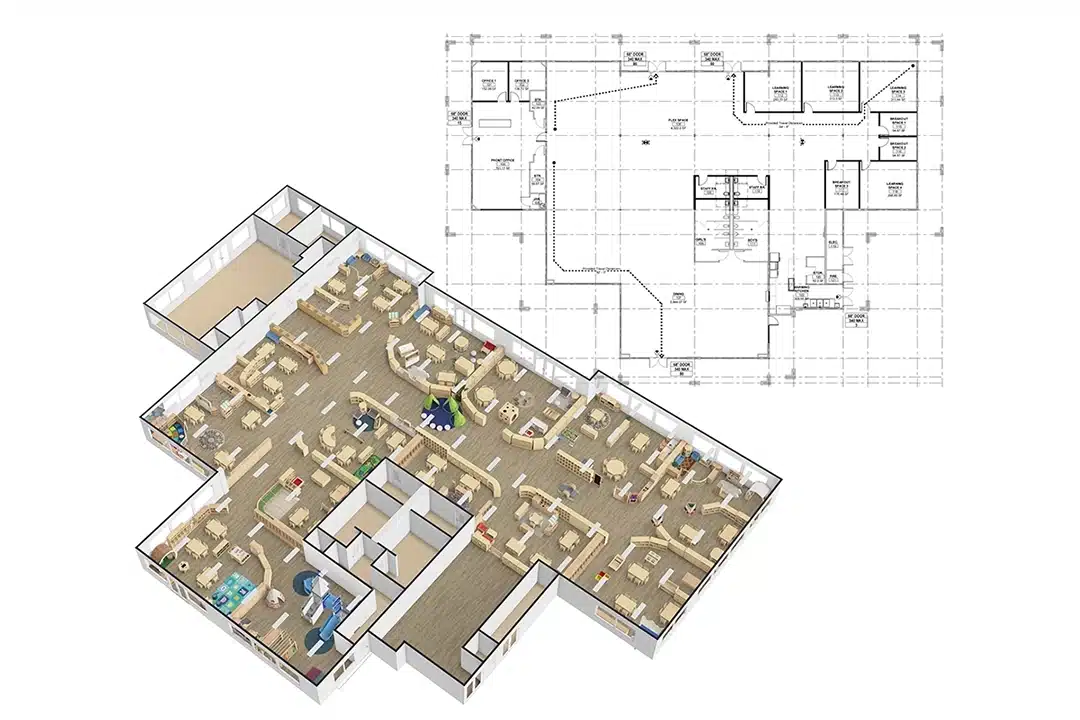Introduction
Keeping a group of preschoolers focused, engaged, and learning simultaneously can be impossible. Children at this age are naturally energetic, easily distracted, and full of curiosity. Many teachers and parents struggle with maintaining structure while keeping activities fun and interactive. Without a well-planned Circle Time, the classroom can quickly become chaotic, leading to frustration for adults and children.
Some educators rely on rigid schedules or passive learning, which often results in boredom, disengagement, or behavioral issues. Others go the opposite route, making Circle Time too free-flowing, which leads to children losing focus and the session feeling unstructured. The key problem is that many Circle Time sessions lack balance—they either fail to capture attention or don’t provide enough learning value. If Circle Time isn’t designed effectively, it misses its full potential as a powerful tool for social, emotional, and cognitive development.
The good news? An engaging and well-structured Circle Time is 100% achievable with the right approach. By using a combination of songs, movement, storytelling, and interactive discussions, Circle Time becomes a dynamic and joyful learning experience. This guide will show you how to structure, conduct, and optimize Circle Time to make it a fun, meaningful, and productive part of your preschool routine. Whether you’re a teacher or a parent, you’ll learn proven strategies, engaging activities, and expert-backed tips to ensure Circle Time is a highlight of the day!

What is Circle Time?
Circle Time is a structured yet flexible group learning activity in which young children gather in a circle to participate in guided discussions, storytelling, songs, and interactive activities. It is a key component of early childhood education designed to build social skills, communication abilities, and cognitive development in an engaging and supportive environment.
Unlike traditional lessons, Circle Time is interactive and inclusive, allowing every child to be seen, heard, and actively involved. It is commonly used in preschools, daycares, and home-based learning to create a structured daily routine that helps children feel secure and prepared for learning.
The Structure of a Typical Circle Time
A well-planned Circle Time session follows a predictable structure, which helps children feel comfortable and engaged. While the exact format may vary, a typical session includes:
- Welcome & Greetings – A fun and friendly start, often with a song or a special routine that allows each child to feel included.
- Morning Routine Activities – Discussions about the calendar, weather, and daily plans to help children understand time concepts.
- Storytelling & Thematic Learning – Reading books, discussing key topics, and engaging in role-play based on a weekly or seasonal theme.
- Songs, Music, & Movement Activities – A combination of singing, dancing, and physical movement to maintain energy and engagement.
- Interactive Discussions – Open-ended questions allow children to express their thoughts, practice active listening, and develop communication skills.
- Goodbye, Ritual & Transition – A structured closing, often with a goodbye song or affirmation, that helps children transition smoothly to the next activity.
Circle Time is not just about sitting in a circle; it is a highly effective tool for teaching young children how to listen, cooperate, express themselves, and develop essential life skills.
Why is Circle Time Important?
Circle Time is more than just a routine—it is a foundation for lifelong learning and social development. A well-structured session provides academic, social, and emotional benefits and shapes how children interact with the world around them.
Enhances Social & Emotional Development
One of the most valuable aspects of Circle Time is its role in building social and emotional intelligence. Young children still learn to express emotions, navigate social interactions, and understand group dynamics. Through guided discussions and structured activities, they develop:
- Turn-taking and patience – Learning to wait for their speaking turns fosters self-control.
- Active listening skills – Encourages respect for others and enhances comprehension.
- Empathy and emotional awareness – Helps children recognize and articulate feelings, both their own and those of others.
- Confidence in speaking – Children become more comfortable expressing themselves in a group by sharing thoughts and participating in discussions.
Develops Language & Communication Skills
Language development is a critical focus of early childhood education, and Circle Time provides daily opportunities for verbal interaction. Through songs, rhymes, storytelling, and group discussions, children enhance their:
- Vocabulary and sentence structure – Exposure to new words and phrases strengthens communication.
- Listening comprehension – Engaging in discussions improves understanding of spoken language.
- Conversational skills – Encourages children to ask and answer questions, describe experiences, and articulate ideas.
Supports Cognitive & Academic Growth
Beyond social and emotional benefits, Circle Time also lays the foundation for academic success. The structured activities included in each session help develop the following:
- Early literacy skills – Recognizing letters, words, and story patterns strengthens pre-reading abilities.
- Numeracy and logical thinking – Simple activities such as counting, pattern recognition, and problem-solving exercises boost cognitive development.
- Memory and attention span – Participating in routines and recalling information from previous sessions improves focus and retention.
Creates a Sense of Routine & Classroom Community
For many preschoolers, Circle Time is their first structured group learning experience. It provides a predictable routine that helps children feel secure and comfortable. When children know what to expect each day, they are more likely to:
- Follow directions and classroom rules – Structured routines reinforce positive behavior.
- Feel belonging – Gathering in a circle encourages connection and teamwork.
- Transition smoothly between activities – Clear beginnings and endings help children shift focus without difficulty.
Circle Time is not just about keeping children entertained—it is an essential tool for fostering learning, emotional well-being, and social interaction. When implemented effectively, it sets the foundation for successful classroom experiences and lifelong communication skills.

How to Structure & Conduct a Successful Circle Time
A well-structured Circle Time creates a balanced environment where preschoolers can engage, learn, and interact while feeling safe and included. Sessions can become disorganized or ineffective without proper structure, leading to disengagement and behavioral challenges. Below is a step-by-step guide to conducting a successful Circle Time that keeps children focused and excited to participate.
Set Up a Comfortable and Functional Space
The physical environment is critical to the success of a Circle Time session. A well-designed Circle Time area promotes engagement, comfort, and order, ensuring children can focus on activities without distractions.
- Seating Arrangement Matters – A soft and spacious Circle Time rug provides a clear and defined space for children to sit comfortably while fostering community. The rug should be large enough to accommodate all students while ensuring personal space.
- Safe & Child-Friendly Furniture – Low-height chairs and modular seating solutions should be ergonomically designed for preschoolers, allowing flexibility in Circle Time arrangements. Soft, rounded edges and sturdy materials help prevent accidents and ensure durability.
- Storage & Organization – Having accessible storage units for books, puppets, props, and activity materials ensures that Circle Time is within reach. Open-shelving or labeled bins help children become independent in retrieving and putting away materials.
- Interactive Learning Tools – Including visual aids like an interactive calendar, weatherboard, and alphabet charts enriches the learning experience and keeps children engaged.
- Minimize Distractions—Strategically place the Circle Time area away from high-traffic zones to ensure that it is free from excessive noise and movement.
Creating an inviting and functional Circle Time space enhances children’s focus and participation, making the session more productive.
Looking to Upgrade Your Circle Time Setup? Suppose you’re designing a preschool or daycare and need high-quality Circle Time rugs, child-friendly furniture, or interactive learning tools. We offer various classroom solutions tailored for early childhood education. Contact us today to explore the best options for your space and create a well-organized, engaging, and safe learning environment.
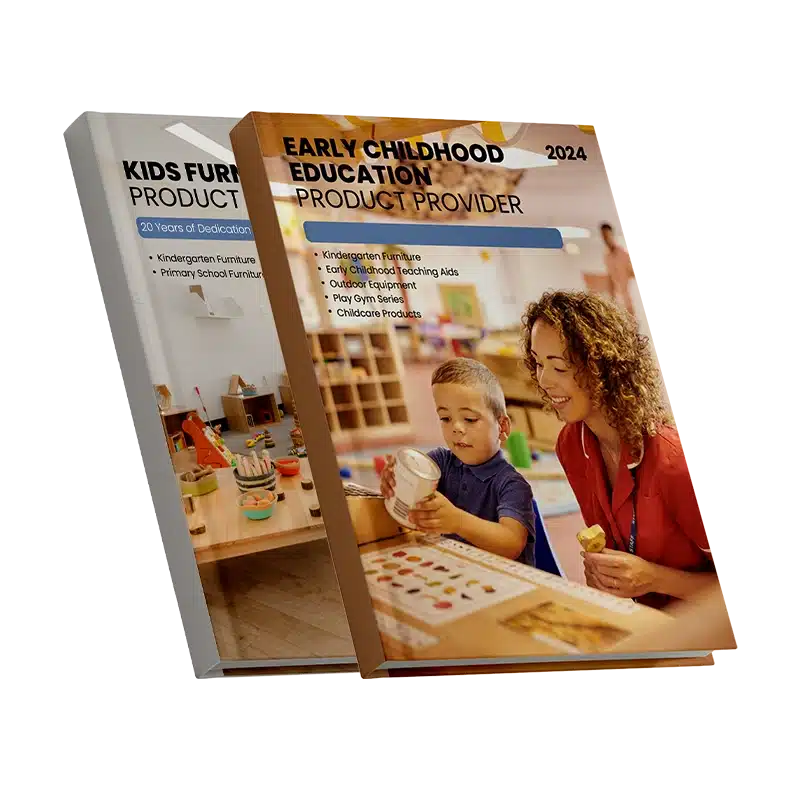
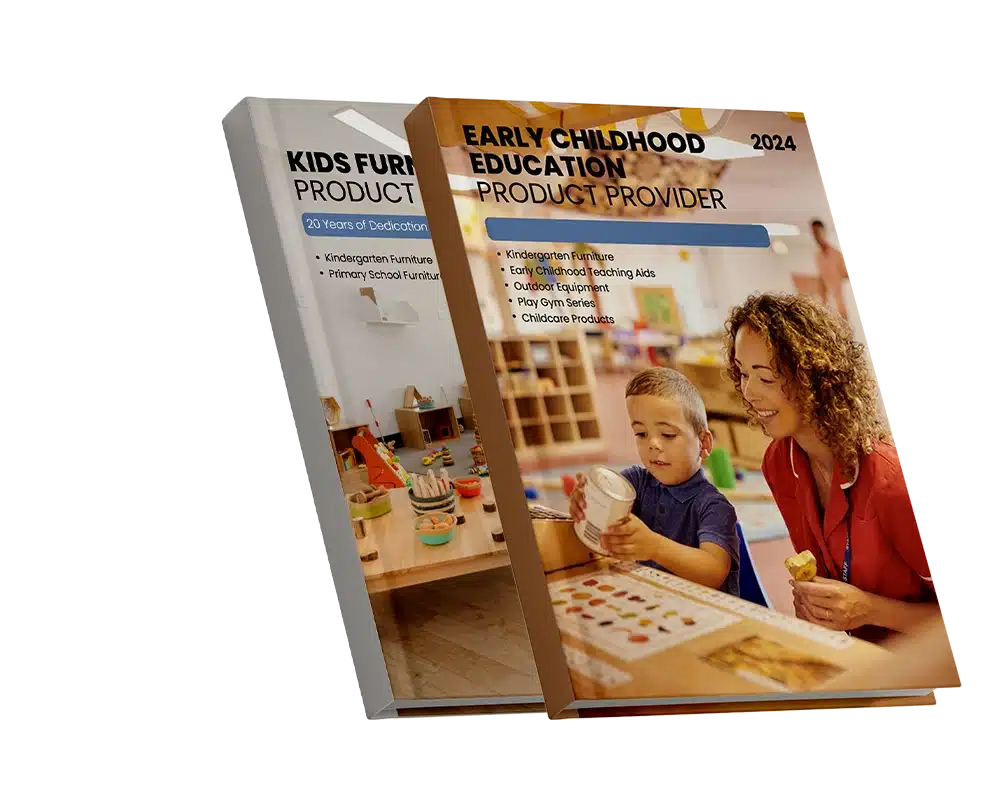
Establish Clear Expectations & Rules
Children thrive in environments with clear rules and expectations. Before starting Circle Time, establish a set of simple and easy-to-follow rules.
- Sit nicely in the circle – Helps maintain order and ensures everyone is involved.
- Listen to the speaker – Encourages respect and patience.
- Raise a hand to speak – Reinforces turn-taking and active participation.
- Use kind words and gentle hands – Promotes a safe and respectful space.
These rules should be consistently reinforced using visual cues, modeling, and positive reinforcement to help children internalize them over time.
Follow a Predictable Routine
Young children feel secure and engaged when they know what to expect. A predictable Circle schedule makes transitions smoother and helps build a sense of routine. A well-structured session typically includes:
- Welcome & Greeting – A familiar hello song or group chant to begin the session.
- Calendar & Weather Discussion – Helps children understand time and seasons.
- Storytelling & Thematic Learning – A short book, discussion, or activity related to a weekly theme.
- Movement & Music – Songs, fingerplays, and physical activities to balance energy levels.
- Interactive Learning – Counting exercises, letter recognition, or hands-on learning activities.
- Closing Ritual – A goodbye song or reflection to signal the end of the session.
Keeping this structure consistent makes children feel comfortable and engaged, making introducing new activities and learning concepts easier.
Keep Activities Short & Engaging
Preschoolers have short attention spans, so keeping each activity brief, interactive, and engaging is essential. The general guideline is:
- Toddlers (1-2 years): 5-10 minutes of Circle Time
- Preschoolers (3-4 years): 15-20 minutes
- Kindergarteners (5-6 years): 20-30 minutes
Breaking sessions into engaging segments ensures children stay interested and actively participate.
Use Interactive Teaching Methods
A successful Circle Time incorporates multiple learning styles to keep children engaged. Use a combination of:
- Visual Aids – Flashcards, storybooks, and props to enhance understanding.
- Auditory Cues – Songs, chants, and call-and-response activities.
- Kinesthetic Activities – Movement-based games and role-playing exercises.
Circle Time becomes an inclusive and dynamic learning experience through various interactive strategies.
Maintain Flexibility & Adaptability
While structure is important, being flexible is equally crucial. Some days, children may be more restless or distracted, requiring adjustments. Effective strategies include:
- Switching to a high-energy activity if engagement levels drop.
- Shortening discussions if attention spans are wavering.
- Allowing children to take on leadership roles, such as leading a song or picking the next activity.
A great Circle Time adapts to the needs of the children, ensuring they remain interested and involved throughout the session.



Best Circle Time Activities for Engagement
The success of Circle Time depends on keeping children actively engaged while reinforcing essential social, emotional, and academic skills. The best activities blend movement, music, storytelling, and interactive discussions to create a fun and structured learning experience. Below are expanded and highly effective Circle Time activities that cater to different learning styles and keep preschoolers excited to participate.
Storytelling & Read-Aloud
Reading stories during Circle Time strengthens language development, listening skills, and imagination. To make it more engaging:
- Use interactive storytelling – Ask children to predict what happens next or mimic character voices.
- Incorporate props and puppets – Using visual aids like felt boards or hand puppets helps bring the story to life.
- Let children participate – Assign roles to act out parts of the story.
- Choose books with repetition – Stories like Brown Bear, Brown Bear, and What Do You See? encourage participation.
- Ask open-ended questions – Encourage children to reflect on the story, enhancing comprehension skills.
Music, Singing & Fingerplays
Songs and fingerplays enhance memory, rhythm, and coordination while making learning fun. Popular choices include:
- Welcome & Goodbye Songs – Helps create a structured start and end to Circle Time.
- Action Songs – Songs like If You’re Happy and You Know It encourages movement.
- Counting Songs – Reinforce early numeracy skills (Five Little Monkeys or Ten in the Bed).
- Alphabet & Phonics Songs – Helps with letter recognition (ABC Song, The Letter Sound Song).
- Emotion Songs – Teach children to recognize and express feelings (If You’re Feeling Happy, Clap Your Hands).
Pairing songs with hand motions, clapping, or dance moves keeps children physically engaged and improves motor skills.
Movement & Gross Motor Activities
Preschoolers learn best through movement, so incorporating physical activities balances energy levels. Some great options include:
- Action-based Circle Games – Duck, Duck, Goose, Musical Chairs, Simon Says.
- Yoga & Stretching Exercises – Simple poses like Tree Pose or Butterfly Stretch help with focus.
- Dance & Freeze Games – Play music and have children dance, then freeze when the music stops.
- Animal Walks – Have children pretend to be different animals, crawling like a bear or hopping like a frog.
These activities help burn off excess energy while reinforcing listening skills and coordination.
Calendar & Weather Discussion
This activity teaches early concepts of time and seasons while encouraging participation.
- Days of the Week Song – Reinforces the concept of time through music.
- Weather Chart Activity – Let a child pick the weather symbol (sunny, rainy, cloudy) for the day.
- Dress for the Weather – Ask, “What should we wear today?” and let children select weather-appropriate clothing from a visual board.
- Seasonal Changes Discussion – Helps children understand how seasons affect nature and daily life.
Daily repetition of calendar and weather discussions builds cognitive skills, pattern recognition, and awareness of time.
Emotion & Social Skills Activities
Circle Time is a great way to teach children emotional intelligence and social awareness. Activities include:
- Emotion Matching Game – Show pictures of facial expressions and have children identify emotions.
- Feelings Check-In – Each child uses a color-coded emotion chart to share their feelings that day.
- Role-Playing Scenarios – Act out situations like sharing a toy or comforting a friend.
- Kindness Jar – Whenever a child shows kindness, add a pom-pom to a jar as a visual reminder of positive behavior.
- Mirror Game – A child makes a facial expression, and others must copy it, helping them recognize emotions.
These activities help children develop self-awareness, empathy, and problem-solving skills.

Counting & Math-Based Games
Early numeracy skills can be easily incorporated into Circle Time through hands-on activities:
- Counting with Objects – Use manipulatives like counting bears or buttons.
- Number Flashcards – Show numbers and have children clap, jump, or stomp that many times.
- Sorting & Pattern Games – Use colored blocks or pictures to teach classification and patterns.
- Roll & Count Dice Game – Roll a giant foam die, and children count aloud as they move.
- “How Many?” Game – Ask children, “How many red shirts do we see today?”
These simple activities help children develop number recognition, one-to-one correspondence, and early math confidence.
Interactive Question of the Day
Encouraging discussion boosts language skills and critical thinking. At the start of Circle Time, ask a “Question of the Day,” such as:
- “What is your favorite color?”
- “What do you like to do on a rainy day?”
- “If you could be any animal, what would you be?”
Children take turns answering, which helps them practice expressing their thoughts, listening to others, and building confidence.
Mystery Box or Sensory Bag
This interactive guessing game engages curiosity and critical thinking.
- Place an object inside a box or bag and let children feel it without looking.
- Have them describe the texture, shape, and size.
- Ask them to guess what it is before revealing it.
- Use seasonal or theme-based objects (e.g., a pinecone in the fall and a seashell in the summer).
This activity stimulates observation skills and sensory awareness while making learning fun.
Science & Nature Exploration
Introducing simple science concepts during Circle Time fosters curiosity and hands-on learning. Some ideas include:
- Sink or Float Experiment – Drop objects in water and predict the outcome.
- Plant Observation – Grow a small plant and track changes over time.
- Bug & Animal Discussion – Learn about insects, birds, or animals through pictures and stories.
- Seasonal Nature Walk – Bring in leaves, acorns, or flowers to discuss seasonal changes.
Science-based activities encourage problem-solving, prediction, and early STEM learning.
Puppet Shows & Dramatic Play
Using puppets or props makes storytelling and social lessons more engaging.
- Act out social situations like resolving conflicts or making new friends.
- Use puppets to retell familiar stories in a fun and engaging way.
- Let children create their own stories using puppets or dress-up costumes.
Dramatic play supports creativity, role-playing, and emotional expression, making it a great addition to Circle Time.
Making Circle Time More Effective
- Rotate Activities – Keep sessions fresh by changing activities regularly.
- Observe Engagement Levels – Adapt the session based on children’s energy and attention span.
- Use Themed Learning – Align activities with monthly themes or holidays.
- Encourage Leadership – Let children lead songs, hold props, or ask questions to increase participation.
By incorporating various interactive activities, Circle Time becomes an experience children look forward to every day. These engaging, hands-on, and multi-sensory activities help preschoolers develop essential life skills while having fun.

Songs & Transition Strategies for Circle Time
Music is a powerful tool in early childhood education, and its role in Circle Time is essential for maintaining structure, engagement, and smooth transitions between activities. Songs help children focus, develop memory skills, and regulate their energy levels, making Circle Time more effective and enjoyable.
Welcome & Greeting Songs
A consistent opening song signals to children that Circle Time is beginning, helping them transition into a focused, ready-to-learn mindset. Some popular options include:
- “Hello, Hello, How Are You?” – A simple and repetitive song that allows children to greet each other.
- “The More We Get Together” – Reinforces a sense of community and friendship.
- “Good Morning Song” – A cheerful way to start the day with a positive tone.
Using the same greeting song every day creates a predictable and comforting routine.
Transition Songs for Smooth Activity Shifts
Young children often struggle with switching between activities, so using transition songs helps minimize resistance and maintain structure.
- “Clean Up Song” – Encourages children to put away toys or materials before moving on to the next activity.
- “Come to the Carpet” – Guides children to gather for Circle Time in an orderly manner.
- “Hands in Your Lap” – Helps signal that it’s time to sit quietly and listen.
- “Walking Feet” – Reinforces safe movement as children transition between activities.
Educators can reduce disruptions and make transitions smoother by incorporating these transition songs.
Energy-Boosting Songs
When children appear sleepy or unfocused, high-energy songs help re-energize and re-engage them.
- “Shake Your Sillies Out” – Allows children to release pent-up energy before focusing again.
- “Head, Shoulders, Knees, and Toes” – Engages movement while reinforcing body part recognition.
- “Jump Up, Turn Around” – Encourages large motor movements to reset focus.
These songs act as a short physical and mental break, keeping children engaged throughout Circle Time.
Calming & Wind-Down Songs
At the end of Circle Time, calming songs help children transition to quieter activities.
- “Twinkle, Twinkle, Little Star” – A soft melody that encourages relaxation.
- “Breathe In, Breathe Out” – Helps children practice mindful breathing.
- “Goodbye Song” – Signals the conclusion of Circle Time and prepares them for the next activity.
Calming songs provide a gentle transition to reading, snack time, or independent play.
Educators can smooth Circle Time transitions by integrating structured songs at key moments, maintaining engagement, and creating a positive learning atmosphere.

Circle Time Themes & Special Activities
To keep Circle Time fresh, exciting, and meaningful, incorporating weekly or monthly themes adds variety while reinforcing seasonal learning, cultural awareness, and key developmental concepts. Below are creative Circle Time themes with unique activities that differ from general engagement activities.
Seasonal Themes
Aligning Circle Time activities with seasons helps children observe and understand natural and environmental changes.
- Spring (New Beginnings & Growth)
- Planting Seeds Discussion – Teach children about plant life cycles.
- Spring Weather Chart – Track seasonal weather changes.
- Baby Animals Exploration – Talk about new life (chicks, lambs, bunnies).
- Summer (Sun & Outdoor Fun)
- Beach & Ocean Theme – Discuss sea creatures and pretend to go on a beach trip.
- Sun Safety Awareness – Teach the importance of sunscreen and hydration.
- Picnic in the Classroom – Have a pretend indoor or outdoor picnic.
- Fall (Harvest & Nature Changes)
- Leaves & Trees Science – Explore why leaves change color.
- Pumpkin Investigation – Touch and describe pumpkins and their seeds.
- Harvest Festival – Discuss farming, apples, and seasonal foods.
- Winter (Cold Weather & Holidays)
- Snow & Ice Exploration – Talk about different forms of water.
- Animal Hibernation – Learn which animals sleep through winter.
- Winter Clothing Sorting Game – Match gloves, scarves, and hats.
Each season offers an opportunity to explore nature, science, and cultural traditions.
Holiday & Cultural Celebration Themes
Holidays introduce diverse traditions and global awareness while making learning festive.
- Chinese New Year – Talk about the Lunar New Year, dragons, and red envelopes.
- Halloween & Costume Day – Read not-too-scary stories and play a guessing game with costumes.
- Thanksgiving & Gratitude Circle – Encourage children to share what they are thankful for.
- Christmas & Winter Traditions – Sing Christmas carols and discuss different holiday customs.
These celebrations create memorable learning moments and a sense of community.
Community Helpers & Career Exploration
Children love learning about real-world jobs and the people running their communities.
- Firefighters & Fire Safety – Teach stop, drop, and roll techniques.
- Doctors & Nurses – Discuss healthy habits and introduce medical tools.
- Mail Carriers & Post Office Play – Let children “send” letters in a classroom mailbox.
- Construction Workers & Building Exploration – Use blocks to create mini structures.
Bringing in guest speakers or taking virtual field trips enhances learning.
Space & Exploration Theme
Introduce children to the wonders of space with interactive discussions and pretend play.
- Planets & The Solar System – Teach planet names through a simple song.
- Astronaut Pretend Play – Have children “float” around like they’re in zero gravity.
- Moon & Stars Exploration – Show images of constellations and talk about nighttime.
Space themes expand children’s curiosity and sense of wonder about the universe.
Under the Sea & Ocean Life
The ocean is full of exciting creatures and science concepts.
- What Lives in the Ocean? – Discuss different sea animals and their habitats.
- Water Sensory Play – Allow children to explore sinking and floating objects.
- Ocean Sounds Listening Game – Play whale calls and crashing waves to spark the imagination.
Ocean-themed activities introduce marine biology in a fun and interactive way.
My Five Senses Theme
Helping children understand their five senses makes learning hands-on and interactive.
- Sight Exploration – Use magnifying glasses to examine small objects.
- Sound Guessing Game – Play different sounds and have children identify them.
- Texture Touch & Feel – Let children explore rough, smooth, and bumpy objects.
- Smell & Taste Test – Let them describe scents like citrus, vanilla, or cinnamon.
These activities build observational skills and sensory awareness.
Friendship & Kindness Theme
Teaching social-emotional skills is essential for building a caring classroom community.
- Kindness Role-Playing – Act out ways to be a good friend.
- Compliment Circle – Each child says something nice about a friend.
- Teamwork Challenges – Play simple games that require cooperation.
Friendship-based themes encourage empathy and inclusivity.
Why Themed Circle Time is Beneficial
- Enhances engagement – Children get excited about new topics each week.
- Makes learning relatable – Connects real-world concepts to daily discussions.
- Encourages hands-on exploration – Many themes include sensory and discovery activities.
- Builds classroom community – Shared experiences strengthen social bonds.
By incorporating seasonal, holiday, career-based, and exploration themes, Circle Time remains fresh, meaningful, and developmentally enriching.


Circle Time for Different Age Groups
Circle Time is not a one-size-fits-all activity. Children at different developmental stages have varying attention spans, learning needs, and engagement levels. To make Circle Time genuinely effective, it must be adapted based on age, ensuring that activities match the children’s cognitive, social, and motor skill levels. Below are tailored strategies for different age groups, from infants to early elementary students.
Circle Time for Infants (0-12 months)
Babies absorb their surroundings at this stage, and activities should focus on sensory experiences, bonding, and early social interaction. While they may not participate actively, they benefit from listening, observing, and feeling engaged.
- Keep sessions extremely short (3-5 minutes) to match their limited attention span.
- Use soothing songs and lullabies to create a calm environment.
- Engage with gentle touch activities, such as soft hand clapping or baby massage.
- Introduce simple finger plays like “Pat-a-Cake” to develop early motor skills.
- Use high-contrast picture books with bold colors and simple images.
At this stage, Circle Time is about exposure rather than structured participation, helping infants build early connections to language and rhythm.
Circle Time for Toddlers (1-2 years)
Toddlers are active, curious, and constantly exploring, making movement-based activities essential for successful Circle Time. Their attention spans are short (5-10 minutes max), so activities must be simple, engaging, and highly interactive.
- Use interactive songs with hand motions, such as “Itsy Bitsy Spider” and “Wheels on the Bus.”
- Introduce sensory bins with different textures related to the day’s theme.
- Read simple, repetitive books like Brown Bear, Brown Bear, and What Do You See?
- Encourage movement with games like “Freeze Dance” or “Follow the Leader.”
- Let toddlers take turns choosing activities, giving them a sense of control.
For toddlers, engagement through hands-on learning is the key to a successful Circle Time.
Circle Time for Preschoolers (3-4 years)
Children begin developing stronger social, emotional, and cognitive skills at this stage, allowing for more extended and structured Circle Time (15-20 minutes). They are eager to talk, explore, and ask questions, making this a great time to introduce interactive discussions and early academic concepts.
- Start with a greeting song to establish a routine.
- Incorporate counting games (e.g., counting how many children are present).
- Introduce themed discussions (e.g., seasons, holidays, or emotions).
- Encourage turn-taking in conversations to build patience and listening skills.
- Use visual schedules so children can see what’s next in the routine.
Preschoolers thrive with structure, but they still need activities to be fun and play-based to maintain engagement.
Circle Time for Kindergarteners (5-6 years)
Children have longer attention spans (20-30 minutes) and better-developed social and verbal skills by kindergarten. This allows for more structured discussions, problem-solving activities, and higher-level learning experiences.
- Encourage children to lead parts of the session (e.g., leading a song or question of the day).
- Incorporate phonics games to support early reading skills.
- Introduce simple math activities (e.g., adding and subtracting with manipulatives).
- Use journaling or drawing prompts to encourage self-expression.
- Foster social discussions about kindness, teamwork, and emotions.
At this stage, Circle Time transitions from pure play into a more structured learning experience while maintaining the fun element.
Circle Time for Early Elementary (6-8 years)
Although Circle Time is mainly associated with preschoolers, it can be effectively adapted for early elementary students by shifting the focus to higher-level discussions, critical thinking, and leadership skills.
- Incorporate daily news sharing, where children discuss something exciting from their day.
- Use discussion prompts related to ethics, problem-solving, and creativity.
- Introduce mindfulness activities such as deep breathing and gratitude reflections.
- Expand literacy activities by letting children retell stories or create their own.
- Engage in classroom decision-making, such as voting on upcoming activities.
Circle Time at this level serves as a community-building tool, helping children develop leadership, confidence, and teamwork skills.
| Age Group | Attention Span | Key Focus Areas | Best Activities | Teacher’s Role |
|---|---|---|---|---|
| Infants (0-12 months) | 3-5 minutes | Sensory exploration, bonding, exposure to rhythm | Lullabies, gentle touch games, high-contrast picture books | Provide a soothing, engaging environment |
| Toddlers (1-2 years) | 5-10 minutes | Movement-based learning, simple routines, early socialization | Action songs, fingerplays, sensory play, short stories | Use high-energy, interactive methods to maintain focus |
| Preschoolers (3-4 years) | 15-20 minutes | Language development, early academic concepts, structured play | Storytelling, counting games, themed discussions, movement activities | Encourage participation and introduce early literacy/numeracy |
| Kindergarteners (5-6 years) | 20-30 minutes | Critical thinking, teamwork, problem-solving | Phonics games, group discussions, simple math activities, leadership roles | Foster deeper engagement and peer interaction |
| Early Elementary (6-8 years) | 30+ minutes | Independent thinking, collaboration, social-emotional learning | Classroom news sharing, journaling, debate-style discussions, mindfulness exercises | Guide discussions, encourage leadership, and integrate higher-level thinking |



Circle Time in Montessori, Waldorf & Reggio Emilia Education
Different educational philosophies uniquely incorporate Circle Time, aligning with their core teaching principles. While Montessori and Waldorf are widely recognized, the Reggio Emilia approach also offers a distinctive way of engaging children in group learning. Below is an overview of how each method adapts Circle Time to its educational goals.
Montessori Circle Time
In Montessori classrooms, learning is child-centered, meaning Circle Time is often optional, flexible, and focused on meaningful discussions rather than rigid structure.
- Smaller, voluntary groups – Children join if they are interested rather than being required to participate.
- Real-world discussions – Conversations often revolve around nature, geography, emotions, and practical life skills.
- Child-led participation – Children can ask questions, lead songs, and share personal experiences.
- Hands-on learning tools – Montessori Circle Time often incorporates real objects, such as a globe for geography discussions or natural materials for science topics.
- Emphasis on respect and order – Teachers model grace and courtesy, reinforcing values like patience, turn-taking, and active listening.
Montessori Circle Time is about meaningful, real-world engagement. It allows children to learn independently while fostering independence and curiosity.
Waldorf Circle Time
In Waldorf education, Circle Time is highly structured and rhythmic, centered around imagination and storytelling. It is a daily ritual that blends movement, music, and seasonal themes.
- Predictable, rhythmic routine – The same verses, songs, and movements are repeated daily to create a sense of security.
- Nature and seasonal themes—Stories and discussions align with the changing seasons, cultural traditions, and the natural world.
- Oral storytelling & movement – Instead of reading books, teachers tell oral stories using expressive gestures and puppets.
- Imaginative play – Circle Time includes dramatic reenactments of folk tales, fairy tales, and nature stories.
- Strong social-emotional component – Activities focus on community-building, empathy, and respect for nature.
Waldorf Circle Time engages a child’s senses, emotions, and imagination, creating a deep connection between learning and artistic expression.
Reggio Emilia Circle Time
The Reggio Emilia approach is based on self-expression, collaboration, and project-based learning. Circle Time in Reggio classrooms is open-ended, discussion-based, and influenced by children’s interests.
- Emergent curriculum – Discussions are shaped by children’s questions, observations, and ongoing classroom projects.
- Collaborative learning – Children work together, exchanging ideas and problem-solving.
- Documentation & reflection – Teachers record children’s thoughts through drawings, writing, and photographs, which are revisited in future discussions.
- Flexible & exploratory – Unlike Montessori or Waldorf, Circle Time is not fixed in routine but changes based on children’s curiosity.
- Multi-sensory engagement – Activities often involve hands-on art, nature exploration, and storytelling woven into real-world experiences.
Reggio Emilia Circle Time fosters creativity, communication, and critical thinking, making learning child-driven and highly interactive.
| Aspect | Montessori | Waldorf | Reggio Emilia |
|---|---|---|---|
| Structure | Flexible & child-led | Highly structured & rhythmic | Open-ended & discussion-based |
| Focus | Real-world learning & independence | Imagination, storytelling & seasonal rhythms | Self-expression & project-based learning |
| Participation | Voluntary, small groups | Whole class required | Child-directed, collaborative |
| Materials | Real objects, nature items | Puppets, handmade props, rhythmic movement | Artwork, photos, interactive materials |
| Teacher’s Role | Observer & facilitator | Storyteller & guide | Co-learner & documenter |
| Academic Content | Naturally integrated (letters, numbers, geography) | Delayed academics, focus on play | Emergent learning through child-led discussions |
Each method brings a unique philosophy to Circle Time, allowing educators to choose an approach that best suits their teaching style and their students’ needs.
Educators and parents can adapt group learning experiences to align with children’s natural curiosity and developmental growth by understanding how Montessori, Waldorf, and Reggio Emilia incorporate Circle Time.

How to Do Circle Time at Home
Circle Time isn’t just for classrooms—it can be just as engaging and beneficial in a home setting. Whether you’re a parent homeschooling your child or just looking for a structured way to spend quality time together, Circle Time at home can foster learning, routine, and family bonding. The key is to keep it simple, fun, and developmentally appropriate for your child’s age.
Create a Dedicated Space
A consistent and comfortable space signals your child that it’s time to focus. Your Circle Time area can be:
- A cozy corner with a soft rug or cushions
- A small bookshelf with books, flashcards, and learning props
- A visual schedule to help children anticipate what’s coming next
- A calendar and weatherboard for daily discussions
You don’t need a full classroom—just a quiet, organized space that encourages focus and participation.
Establish a Routine
Children thrive on predictability. A simple Circle Time routine at home might include:
- Welcome Song or Greeting – A fun way to signal the start of Circle Time
- Calendar & Weather Check – Builds early math and observation skills
- Storytime – Enhances literacy and listening comprehension
- Movement & Songs – Helps release energy and keep engagement high
- Interactive Discussion or Learning Activity – Reinforces the day’s topic
- Closing Ritual – A goodbye song or reflection to wrap up
Even 10-15 minutes of structured Circle Time provides children with routine and valuable learning experiences.
Incorporate Hands-On Learning
One of the most significant advantages of doing Circle Time at home is the ability to customize activities to your child’s interests. Some practical learning tools include:
- Sensory bins for hands-on exploration
- Puzzles and matching games for problem-solving skills
- Themed play setups (e.g., pretend grocery store for counting practice)
- DIY props like weather charts and number boards
Learning at home should feel playful, not rigid, so mix in games, pretend play, and creative storytelling.
Adapt to Your Child’s Needs
The beauty of home-based Circle Time is that it can be completely personalized. Adjust based on:
- Your child’s age – Keep it shorter for toddlers and longer for older children
- Your child’s mood – If they seem restless, switch to a movement-based activity
- Special interests – If they love dinosaurs, incorporate a dinosaur-themed learning day
Flexibility is key—some days, Circle Time may be high-energy and interactive, while others may be quiet and story-driven.
Get Siblings & Family Members Involved
Circle Time can be a great way for siblings to bond. Older siblings can help lead songs, read stories, or assist with activities, making learning collaborative. Parents can also join in, creating a shared family learning experience.
Keep It Fun & Stress-Free
Circle Time at home should never feel like a forced lesson. It’s about enjoying learning together. If a child loses interest, don’t push it; switch gears or end the session early. The goal is to create positive learning experiences that children look forward to daily.



Common Challenges & Solutions
Even the most well-planned Circle Time can come with challenges. Here’s how to overcome common issues and keep sessions smooth and engaging.
Children Lose Interest or Get Distracted
Why It Happens:
- Sessions are too long for their attention span
- Activities don’t match their energy level
- There’s too much passive listening and not enough interaction
How to Fix It:
✔ Keep activities short and dynamic – Switch every 5-10 minutes
✔ Alternate between quiet and active segments – Follow a story with a movement game
✔ Use hands-on props like puppets, visuals, or manipulatives to hold attention
✔ Involve children in decision-making – Let them pick songs, stories, or discussion topics
Some Children Refuse to Participate
Why It Happens:
- They are shy, overwhelmed, or uninterested in group settings
- They feel forced to participate instead of being invited in
- They are unfamiliar with the structure and expectations
How to Fix It:
✔ Offer low-pressure participation – Let children observe first before encouraging them to join
✔ Use engaging themes based on their favorite characters or hobbies
✔ Give them a helper role (e.g., turning the calendar page or picking the next song)
✔ Celebrate small steps – Even sitting in the circle quietly in progress
Difficulty Managing a Large Group
Why It Happens:
- Too many children talking at once
- Some children dominate while others stay silent
- Off-topic conversations take over
How to Fix It:
✔ Use visual rules – A poster with simple icons like “Raise Your Hand to Speak” helps reinforce expectations
✔ Encourage turn-taking with a talking stick or ball
✔ Keep Circle Time groups small if possible (break into two circles if needed)
✔ Redirect gently – Acknowledge off-topic comments, then guide back to the main discussion
Transitions Are Chaotic
Why It Happens:
- Children resist moving from one activity to another
- The transition feels abrupt or confusing
- There is no clear signal for when one activity ends and another begins
How to Fix It:
✔ Use transition songs (e.g., “Clean-Up Song” or “Time to Sit Down”)
✔ Give a countdown warning (“In two minutes, we’ll put away our books and start dancing”)
✔ Use visual cues like a picture schedule or ringing a bell to signal change
✔ Make transitions interactive (e.g., “Hop like a bunny to your seat”)
Children Struggle to Follow Rules
Why It Happens:
- They are still learning self-regulation
- Rules are too complex or inconsistently enforced
- They don’t see a clear consequence or reward
How to Fix It:
✔ Keep rules simple and visual – “Listening Ears, Quiet Hands, Big Smiles”
✔ Use role-playing to practice expected behaviors (e.g., model good sitting and listening)
✔ Praise positive behavior immediately – “I love how Alex is sitting so nicely!”
✔ Redirect gently – Instead of “Stop talking,” try “Let’s all listen to our friend now.”
Sessions Feel Repetitive and Boring
Why It Happens:
- The same activities are repeated too often
- The structure is too rigid, with slight variation
- Children outgrow certain songs or games
How to Fix It:
✔ Rotate activities weekly – Introduce new songs, themes, or discussion topics
✔ Let children suggest activities – Give them ownership over the session
✔ Introduce surprise elements – Use a “Mystery Bag” where each day a new item sparks discussion
✔ Incorporate seasonal and holiday themes to keep it fresh
Circle Time works best at home or in a classroom when structured, flexible, engaging, and low-pressure. Proactively addressing challenges and adapting to children’s needs can become a daily highlight that fosters learning, connection, and joy.

Frequently Asked Questions
Circle time is a vital part of preschool life, and many educators and parents have questions about making it as effective and engaging as possible. Here are some frequently asked questions and their answers to help you navigate circle time for preschoolers.
1. How long should Circle Time last?
The ideal length depends on the child’s age and attention span:
| Age Group | Recommended Duration |
|---|---|
| Toddlers (1-2 years) | 5-10 minutes |
| Preschoolers (3-4 years) | 15-20 minutes |
| Kindergarteners (5-6 years) | 20-30 minutes |
| Early Elementary (7+ years) | 30+ minutes |
Younger children benefit from shorter, high-energy sessions, while older kids can handle longer discussions and structured activities.
2. What if a child refuses to participate?
Don’t force them—some children need time to warm up. Instead:
- Let them observe first before joining in.
- Offer minor leadership roles (e.g., choosing the next song).
- Incorporate topics or activities they enjoy to spark interest.
Most children will gradually engage once they feel comfortable.
3. How can I make Circle Time more engaging?
- Alternate between active and quiet activities (e.g., a movement game after storytelling).
- Use props, puppets, and visuals to capture attention.
- Introduce themes (seasons, professions, emotions) to keep it fresh.
4. When is the best time for Circle Time?
- Morning sessions work well when children are most focused.
- After transitions (e.g., after playtime or snack time) to help refocus attention.
- Before naptime or dismissal as a calming, reflective activity.
5. What materials do I need?
You don’t need much, but these can help:
- A soft rug or designated area for gathering.
- Storybooks and visual aids to support discussions.
- Musical instruments or rhythm props for songs.
- Flashcards, charts, or puppets to enhance learning.
6. How do I handle distractions and misbehavior?
- Set clear, simple rules (e.g., “Listening ears on,” “Raise your hand to speak”).
- Use positive reinforcement (praise good behavior instead of focusing on misbehavior).
- Incorporate movement breaks to release excess energy.
By keeping activities engaging, structured, and adaptable, Circle Time can be a fun, meaningful experience for all children.songs, and circle time games help maintain their interest.


Conclusion
In conclusion, circle time is not just a fun and engaging activity—it’s an essential part of preschool education that fosters children’s social, emotional, and cognitive development. Whether singing circle time songs for preschoolers, exploring circle time games, or discussing the weather with a circle time calendar, every moment in circle time serves a purpose. It’s a time to build community, develop language skills, and introduce children to new concepts in a supportive and interactive way.
Preschool circle time can become a cornerstone of your teaching day by incorporating the right balance of structure and fun. Remember, it’s essential to adapt circle time to fit the needs of all children, whether you are working with toddlers, preschoolers, or those with special needs. Adjust the complexity of activities, keep it engaging, and always have a learning goal in mind.
If you implement the strategies and ideas mentioned in this guide—whether through circle time routines, circle time activities for preschoolers, or circle time boards—you’ll create an enriching environment that encourages participation, builds confidence, and promotes developmental growth.
With these tips in your toolkit, you’ll be able to manage circle time efficiently, maintain the attention of your preschoolers, and make learning a fun, interactive experience that they look forward to each day. So, get ready to start your circle time with songs, games, and activities that nurture the minds and hearts of preschoolers!

